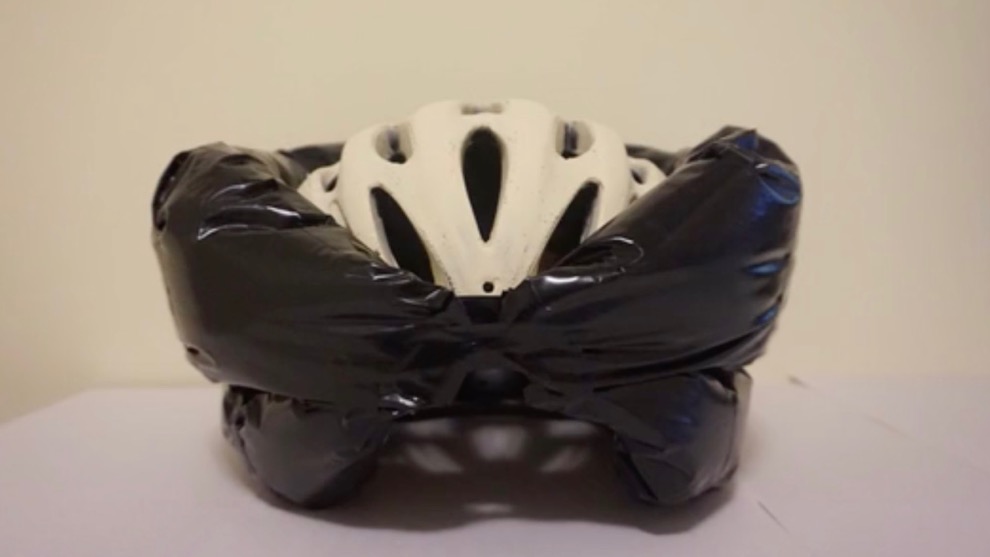Innovation
Nova Scotia engineer developing deployable airbag helmet
Nemayna Petrovic trying to raise $4,000 for Helmet WorX through Kickstarter

caption
Helmet WorX is a bicycle helmet with a safe twist -- an airbag.
caption
Helmet WorX is a bicycle helmet with a safe twist — an airbag.After a bad cycling accident, Nemayna Petrovic was inspired to make the safest helmet in the world.
“Everything went black for about half a second or so,” said Petrovic, describing the crash he had in August.
He was going about 25 km/h and when his left pedal broke and he fell, he landed on his back. “The back of my helmet was all cracked,” said Petrovic.
He didn’t suffer any head injuries from the fall, but it was a possibility. Related stories
After his crash he realized bicycle helmets hadn’t changed much in the last 15 years, so he decided to try and make a new one. The prototype, Helmet WorX, looks like a regular helmet, but has a small twist. An airbag shoots out of it.
The airbag deploys in two different directions; it goes down to cover the bottom of the head and it goes up covering almost the entire top of the helmet.
The helmet’s technology will work through a sensor. Petrovic said the sensor will be able to determine when the cyclist is about to hit the ground and will then deploy the airbag. Although Petrovic hasn’t picked the exact sensor, he’s looking for one that won’t be too sensitive.
“When you’re holding it you don’t want it to go off,” said Petrovic, adding that the sensors “need to see the difference between a normal crash and just someone handling, putting it down on the table or something like that.”
Petrovic said sensors would likely be visible unless he was able to have them stylized to look like part of the helmet.
Despite its added features, Petrovic’s design is made to look like a traditional bicycle helmet, with a lightweight feel and look. He wants the helmet to retail for $80 to $90 because he aims to make it an everyday helmet for commuters.
“It’s for the daily rider who is going to or from work, or needing to commute to the grocery story to get some groceries … I’m trying to market it at a reasonable price so that anyone can afford it,” said Petrovic.
The safest route
Kelsey Lane, executive director of the Halifax Cycling Coalition, doesn’t think a new helmet is the best approach to safer cycling.
“We shouldn’t really have a need for these types of helmets, if we were actually building proper infrastructure that you can get around on a bike without feeling like you have to have an airbag shooting out of your helmet,” said Lane.

caption
Kelsey Lane of the Halifax Cycling Coalition thinks infrastructure is the key to making cycling safer, not helmets.Cycling injuries in Canada are common. According to a report from the Canadian Institute for Health Information with data from 2009-2010, 665 people suffered head injuries as a result of cycling in that year. Nova Scotia accounted for fewer than 200 of them.
Head injuries from cycling accidents can result in lasting trauma. According to a report by Insurance Corporation of British Columbia, head injuries as a result of a crash can have effects on memory and can cause intellectual impairment, seizures and personality changes. The report also said head injuries account for 75 per cent of all cycling-related deaths.
As for Petrovic, he is dedicated to his project, but needs additional financial support. He said he turned to Kickstarter because it is a well-known fundraising site.
“I might as well take the chance and put it (the helmet) up,” said Petrovic, who wants to have a working helmet ready by the summer. “So I went for it.”
Helmet WorX’s campaign has a goal of $4,000 by Dec. 15. If he doesn’t reach this goal, Petrovic said he’ll use different fundraising avenues.

